
生物气溶胶的输运与传播特性—建模与应用(英文版)
¥ 96.1 4.8折 ¥ 199 全新
库存2件
作者颜屹寰;屠基元
出版社清华大学出版社
出版时间2022-08
版次1
装帧其他
货号x17
上书时间2024-10-17
- 最新上架
商品详情
- 品相描述:全新
图书标准信息
- 作者 颜屹寰;屠基元
- 出版社 清华大学出版社
- 出版时间 2022-08
- 版次 1
- ISBN 9787302603801
- 定价 199.00元
- 装帧 其他
- 开本 16开
- 纸张 胶版纸
- 页数 768页
- 字数 479千字
- 【内容简介】
- 《生物气溶胶的输运与传播特性—建模与应用(英文版)》通过多个角度(尺寸分布,动能特性,化学特性,生物特性等),从机理上来剖析何为生物气溶胶,并进一步解释其在空气中的传播特征以及主要的影响因素(外在作用力, 湍流耗散,吸入沉积等)。随后,通过与微生物的活性,感染性等生物特性相结合,分析生物气溶胶吸入后在人体呼吸道的传播特征并关联相应的吸入感染风险分析。本书还将通过运用CFD建模与模拟,来实现对于生物气溶胶在空气中传播的系统性预测并对其在具体环境下传播特性的捕捉。同时,通过对于模拟数据的分析,评估预测感染风险。除此之外,本书将涵盖多类案例分析(包含吸入前与吸入后),通过对于案例的讨论与剖析,进一步展望生物气溶胶模拟在实际应用中的前景。最后通过实际数据为依据,提供一些提升有效防疫防控措施的建议与设计。
- 【作者简介】
- 颜屹寰,现于墨尔本皇家墨尔本理工大学(RMIT)任研究员,致力于研究污染物在室内及建筑环境内的传播以及评估人体暴露在污染物下的感染风险,有着丰富的在大尺度机舱环境下的模拟经验及技巧,并深入分析了机舱环境等高人口密度环境下污染物传播的主要影响因素。深入参与了国家重点基础研究发展计划(973计划),大型客机座舱内空气环境控制的关系科学问题研究,曾获得澳洲博士生奖学金(APA)全奖,以及国家优秀自费留学生奖学金(全球仅500名)。
- 【目录】
-
Chapter 1 Introduction 1
1.1 Emerging Respiratory Pandemics. 1
1.2 Transmission Modes. . 4
1.3 From the Fluid Dynamics Perspective 9
1.3.1 Exhalation 9
1.3.2 Transport Characteristics in the Air. . 10
1.3.3 Exposure and Inhalability 12
1.3.4 Deposition in Human Respiratory System 13
1.4 Research Method 14
1.5 CFD Application to Transmission Control 21
References 25
Chapter 2 Bioaerosol Dynamics 32
2.1 What is Bioaerosol 32
2.2 Types of Bioaerosols 33
2.3 Properties of Bioaerosol 36
2.3.1 Size Distribution 36
2.3.2 Kinetic Properties 39
2.3.3 Biological Properties 40
2.4 Motion in the Air 42
2.5 Dynamic Size Distribution 47
2.5.1 Evaporation and Condensation 47
2.5.2 Influential Factors 48
2.6 Deposition Mechanism 51
2.7 Summary 53
References 54
Chapter 3 Respiratory-based Bioaerosol Infections 59
3.1 Bioaerosol in the Air 59
3.2 Bioaerosol Inhalation and Deposition in Human Respiratory System 61
3.2.1 The Human Respiratory System 61
3.2.2 Concept and Physical Basis of Inhalability 63
3.2.3 Definition and Physical Basis of Deposition 63
3.2.4 Local and Total Respiratory Tract Deposition . 64
3.2.5 Biological Mechanisms of Clearance and Redistribution 65
3.3 Bioaerosol-related Infections. 66
3.4 Chain Infection due to Bioaerosol Transmission. . 68
3.5 Bioaerosol Infection Control 69
3.6 Summary 71
References 72
Chapter 4 Computational Fluid Dynamics 76
4.1 Introduction 76
4.2 Principles of CFD and Equations. . 77
4.3 Turbulent Flow and Models 81
4.4 Bioaerosol Transport Models 85
4.4.1 Lagrangian Model 86
4.4.2 Eulerian Model . 87
4.5 CFD Workflow and Scheme 89
4.6 Current Status of CFD Software 93
4.7 Summary 94
References 95
Chapter 5 Effects of Occupant\'s Micro-environment on Bioaerosol Transport 98
5.1 Introduction 98
5.2 Metabolic Body Heat and Thermal Plume 100
5.2.1 Characteristic of the Thermal Plume for Sitting Posture 102
5.2.2 Interactions between Thermal Plume and Respiratory Flow 103
5.2.3 Plume Effect on the Contaminant Field 105
5.3 Computational Thermal Manikins 106
5.3.1 Four Simplification Approaches 107
5.3.2 Case Study of the CTM Simplification Approaches in an Enclosed
Chamber . 111
5.4 Quantifiable Simplification Approach for CTMs 116
5.4.1 Mesh Decimating Algorithm. . 116
5.4.2 Effect of MDA Simplification on Global Airflow Field. 119
5.4.3 Effect of MDA Simplification on Human Micro-environment. 120
5.4.4 Case Study-Micro-environment of CTMs using Various
Simplification Approaches 122
5.5 Thermal Airflow Field 127
5.5.1 Case Study-An Enclosed Chamber. . 127
5.5.2 Case Study-A Reduced-scale Cabin Environment 130
5.6 Summary 135
References 137
Chapter 6 Bioaerosol Transport in Occupied Environments. . 140
6.1 Introduction 140
6.2 Tracking Models of Bioaerosol Transport 142
6.2.1 The Lagrangian Approach. . 142
6.2.2 The Eulerian Approach 145
6.2.3 Bioaerosol Concentration and Distribution Transport 148
6.2.4 Case Study-Bioaerosol Transport in a Small Chamber 149
6.3 Impacts of Indoor Ventilation Scheme 155
6.3.1 Case Study-Comparison of the Displacement and Mixing Ventilation
in a Small Chamber 155
6.3.2 Case Study-Effect of the Ventilation Layouts in a Conference Room 158
6.4 Bioaerosol Transport in Densely Occupied Environment 162
6.4.1 Case Study-A Typical Cabin Environment 163
6.4.2 Case Study-A Public Transport Train Cabin 169
6.4.3 Case Study-A Large-scale Airliner Cabin Environment 173
6.5 Summary 179
References 181
Chapter 7 Influential Factors on Bioaerosol Transport. 184
7.1 Introduction 184
7.2 Effect of Dynamic Droplets Size Distribution in Indoor Spaces. . 185
7.2.1 Droplets Size Distribution from Various Respiratory Behaviour 186
7.2.2 Droplets Size Reduction due to Evaporation 189
7.2.3 Case Study-Dynamic Size Reduction of Cough Released Bioaerosols
and Droplets due to Evaporation. . 192
7.2.4 Case Study-Interactions between Human Thermal Plume and Cough
Released Droplets 200
7.2.5 Delayed Droplets Deposition due to Evaporation 204
7.3 Effect of Disease Active Time and Viability via Air Transmission 207
7.3.1 Key Parameters of Infectious Diseases 208
7.3.2 Mathematical Models for Quantitative Risk Assessment 210
7.3.3 Integration of Mathematical Models into Numerical Modellings. . 215
7.3.4 Case study-Wells-Riley Based CFD Simulation. 216
7.3.5 Case study-Dose-response Based CFD Simulation 219
7.4 The Social Distancing and Capacity Effects in Indoor Environments 223
7.4.1 Case Study-A Densely Occupied Meeting Room 224
7.4.2 Ventilation Scheme and Room Arrangement 228
7.4.3 Bioaerosol Release via Coughing and Speaking 231
7.4.4 Occupants\' Exposure and Infectious Risks over Distance and
Capacity Changes 235
7.5 Summary 238
References 240
Chapter 8 Case Studies of Bioaerosol Inhalation and Deposition. 243
8.1 Introduction 243
8.2 Bioaerosol Inhalability 244
8.2.1 Case Study-Human-induced Wake Flow and Its Impact on
Particle Inhalability. . 245
8.2.2 Release Modes and Source of Particles 247
8.2.3 Impacts of Freestream Velocity and Walking Speed . 249
8.2.4 Particle Size Effects on Aspiration Efficiency During the Motion. 258
8.3 Particle Deposition in Nasal Cavity 263
8.3.1 Construction of Nasal Cavity Models. 263
8.3.2 2D Surface Unwrapping over 3D Nasal Cavity Model 266
8.3.3 Particle Deposition Patterns of Unwrapped Nasal Cavity 269
8.4 Particle Deposition in the Lower Respiratory Airway 275
8.4.1 Simplification of Respiratory Airways 275
8.4.2 Particle Tracking Modelling in the Lower Airway. 278
8.4.3 Deposition Analysis at Various Cross-sectional Studies. . 281
8.5 From Indoors Release to Inhalation and Deposition in the
Respiratory System 285
8.5.1 Interpretation of the Bioaerosol Transmission Cycle using
CFD Method. . 285
8.5.2 Integrated Models of Indoor Space and Human Respiratory System. . 287
8.5.3 Case study - Practical Application of the Integrated Model 291
8.5.4 Case study - Further Practical Application of the All-in-one
Respiratory Model . 295
8.6 Summary 302
References 304
Chapter 9 Health Risk Assessment and Prevention Recommendations. 306
9.1 Introduction 306
9.2 Passengers\' Health Risk Assessment in Airliner Cabins 309
9.2.1 Case Study-Modelling of Bioaerosol Transmission in a 7-row Cabin 309
9.2.2 The Wells-Riley Framework 315
9.2.3 Quantifiable Risk Assessment of Individual Passenger 316
9.2.4 Case Study-Passenger Movement Impacts 319
9.2.5 Case Study-Effects of the Personal Jets 323
9.3 Emergency Indoor Ventilation Strategy 326
9.3.1 Case Study-Formation of Fan-driven Indoor Tornado . 326
9.3.2 Dynamic Core Region Identification Approaches 328
9.3.3 Effect of Lift Angle and Vortex Intensity 332
9.4 Other Case Studies on Pandemic Interventions 339
9.4.1 Wearing Masks. 339
9.4.2 Social Distance Rule 343
9.5 Summary 348
References 350
Chapter 10 Advanced Modelling and Future Trend. 352
10.1 Fast Fluid Dynamic on Disease Transmission Modelling 352
10.2 Optimisation of Wells-Riley Framework and Infection Risk
Assessment 355
10.3 Advanced Modelling of Multiple Moving Occupants 358
10.4 Virtual Platform for Infection Risk Assessment Enhanced by Machine
Learning 360
References 364
相关推荐
-

生物气溶胶的输运与传播特性--建模与应用
九五品天津
¥ 93.66
-

生物气溶胶的输运与传播特性--建模与应用
九五品北京
¥ 93.55
-

生物气溶胶的输运与传播特性--建模与应用
九五品北京
¥ 93.99
-

生物气溶胶的输运与传播特性—建模与应用(英文版)
九品北京
¥ 115.57
-

生物气溶胶的输运与传播特性——建模与应用(英文版)
全新广州
¥ 131.79
-

生物气溶胶的输运与传播特性——建模与应用(英文版)
全新广州
¥ 133.79
-

生物气溶胶的输运与传播特性——建模与应用(英文版)
全新广州
¥ 131.79
-

生物气溶胶的输运与传播特性—建模与应用(英文版)
全新广州
¥ 112.54
-

生物气溶胶的输运与传播特性——建模与应用(英文版)
全新天津
¥ 132.29
-
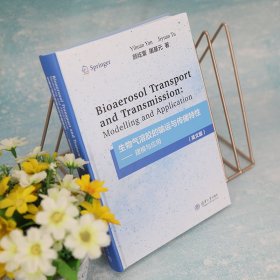
生物气溶胶的输运与传播特性——建模与应用(英文版)
全新南京
¥ 139.31
— 没有更多了 —


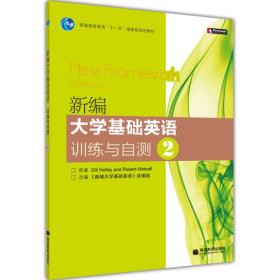
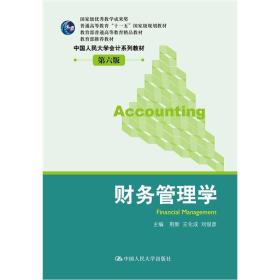
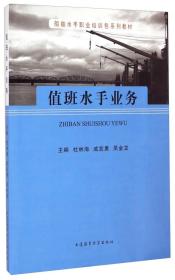
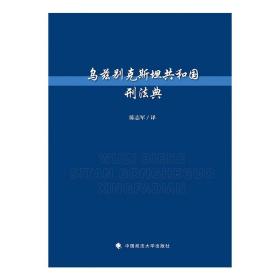




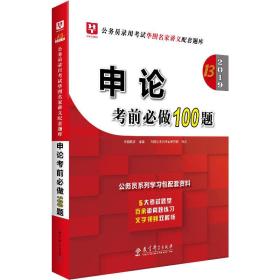

以下为对购买帮助不大的评价